Photographers choosing to shoot with hand-held cameras using film have two main, film formats to choose. The 35mm film format is the more popular film format in the world. It is a very flexible format in which to work. It was first introduced by Kodak in 1934. It can be found in just about any camera shop, or even convenience stores, almost anywhere in the world.
There are many varieties of 35mm film as well. It is available in both color and black and white formats. Each type of film has slightly different visual characteristics, and many photographers have a favorite type of film that they prefer for the color representation or degree of clarity it provides. It is also available in different “ISO” levels, which defines the varying degree that the film is sensitive to light.
35mm vs 120 Medium Format Film. A comparison of the two
Another advantage to 35mm film is that is very small and portable. This means that the cameras that take 35mm film are smaller as well. This is probably the main reason that the format rose to such popularity, it allowed for the widespread use of small, portable, lightweight cameras that were easy to hold and for traveling. Black and white 35mm film can be processed quite easily by hand, or sent to a lab for processing. The film negative can then be scanned, or manually printed using an enlarger. Color negative film must be processed by a lab, lab and can then be printed, using an enlarger, or scanned.
120 film is a less popular format than 35mm, but it is technically a “superior” film to use. The increased size of the film negative allows for much more resolution and detail.
120 film is harder to find, and you probably won’t find it at the corner store. The cameras that use 120 film are usually quite a bit larger than their 35mm cousins, and the more professional models can be heavy and even a little unwieldy.
120 film also became more popular in the sub-genre of toy cameras. These are cheap cameras that are technically poor, but photographers use the low-fidelity look to gain a certain aesthetic effect.
Another important consideration for the film market is sustainability. With the drastic increase in digital photography, film has been put the wayside with manufacturers focusing nearly all of their attention on digital cameras. Some film formats might not be around forever!
—
Don’t forget The Darkroom can develop any type of film.
Learn more about our 35mm film developing and our 120 film developing. It’s only $12 a roll.



 My Account
My Account

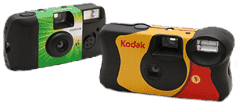
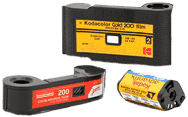
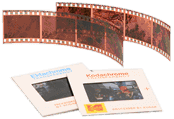


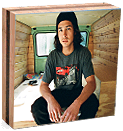
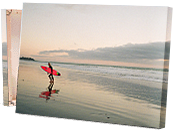

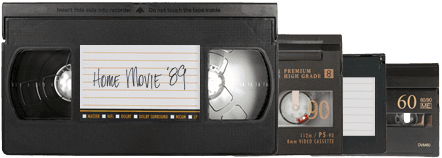
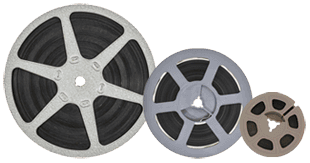
 Gift Cards
Gift Cards Film Index
Film Index FAQ
FAQ
I’m not sure where you’re coming from, but 35mm is a format for snapshots, journalism, fast moving subjects, and things that don’t need to be blown up over 8×10 because it simply does not have the resolution to go higher. I could go into diffraction, lines per mm, number of silver grains, inverse square on the enlarger, etc, all providing for the greater resolution of medium format, but you could just go read The Camera, hit Wikipedia or Google, maybe read a book or two on optics, and get the to the same place.
As for tonal graduation, the physical media is the exact same, just cut to a different size. Giving the exact same grains per mm, tonal graduation, and all that.
Baloney ! If all else is equal (lens quality, chemical emulsion on the substrate, etc.) the larger the format of the focal plane of the image the more chemical emulsion is there for the image and the higher the quality. Resolution is exactly proportional to the area of the focal plane image size, period. No film ever limited lens design. No credible photographer said that it did. Hasselblad’s research facilities have not changed physics. Misinformation is your realm, not the other guy’s.
Jwr is totally right on.I printed negatives from all formats for years in a lab .. 35 mm-120- 6×7,6×9,4×5,5×5 6×6 ect… the larger the negative the better print you will get. The quality from a medium format negative is always better. It’s sad people don’t actually shoot with film anymore. I miss the “old school” film processing days! There’s nothing like processing and printing your own film!
“It’s sad people don’t actually shoot with film anymore.” Nope. There still are people shooting in 120!
https://www.facebook.com/120lovefilm
There there fellas, cant we all just get along? lol
it’s fine to have objections and different opinions but it seems to me the attitude in which these differences in opinion have been delevered are pretty disrespectful and unnecersary.
Can 35 or 120 black and white film be stored in the refrigerator or freezer?
Yes. It will last indefinitely if you put it in the freezer. It does not matter what size film it is. When you take it out, let it thaw out for a couple or three hours before using it. I have used film that was frozen for over 5 years and it came out just fine.
My understanding is that over time, film degrades even when kept in a freezer due to gamma rays which can penetrate anything, and eventually show up on film which hasn’t been used in a long time. They emanate from the sun.
Ive never developed my own film; although, I sure wish I knew how. I am really glad to have found The Darkroom because there are not many good places left around to develop “real” film. I’m getting ready to send in my first roll and I hope you guys are as good as you sound. Can’t wait to receive my pictures.
Hello People.
I realized for a few years that digital maker that use to make great film camera was trying to jump to the next century but they fail and lied about going to the next frontier it was all hype….at this time from the year 2000
nothing had approved with digital not even close.FILM RULES and the price for both camera and film is cheaper and better.My mistake was i believe them with there hype that digital had replace film (NOT SO)
even 35mm film is greater then a 80megapixel medium format if not equal
at best-but that $50,000 for the digital back, now do the math i can get a film medium format kit for $600.00 buy film use the darkroom to develop and scan at 80megapixel with great detail and blow away any digital microwave DSLR. The problem with the new kids today they don’t know how film really work (NO IDEA) intact they can’t even comprehend a camera that you have to manually focus by hand..Why because they lazy and don’t want to know-so that’s why the DSLR manufactures are still making Digital camera and charging them lost of many for being lazy. And they are making a killing from them..Plus did i mention they lying about megapixels. Read please.
I love film, it’s romantic. Nothing will ever replace it really. Yes, I do have a digital camera, but I use my film cameras more. To me the pictures are just better on film.
you can make excellent 11by14s with 35mm if you have slow film like tech pan ,the problem is it is hard to find slow extra fine grain films these days seems like most films now are 200 0r 400asa ,its hard to find 100 asa color film which will make a decent 11;14
It has been shown that a digital Nikon 810 image will have greater detail than a Bronica GS-1 6×7 negative. However there is more to photography than resolving power. I really liked Agfa film for portraits. How much resolution do I need? Nothing beyond medium format film as I never print larger than 16×20 which medium format film handles easily.
The price of used film cameras has dropped significantly in the last few years. 35 mm fine cameras that originally sold for $1000+ twenty years ago can be purchased in like new condition for less than $100. (I just bought a Pentax PZ-1a ($50) ) Similar buys are available on medium format cameras. Bronica GS-1 is an excellent buy.
Film sales peaked in 2003. Today film sales are only 2% of that amount. There are a lot of great film cameras available today. In 35mm lenses Canon FD are a great buy for film as Canon changed their mount from FD to EOS. Old Pentax “K” lenses are usually more expensive than Canon FD because Pentax K can be mounted on Pentax digital without an adapter. Viewfinders are amazingly bright on those pre-automatic focus cameras and split image microprism finders are a joy to use.
I was amused to read that the Nikon 810 image has more detail than the 6X7 Bronica. Perhaps, but NO digital camera can ever equal the color rendition of good film. The tonality. gradient or transition of digital is abrupt, with frequent “white” areas showing a blown out pixel. Film is just better, which is why discerning movie directors still use it, and even a few TV shows still use Kodak movie film rather than digital. No comparison. Just watch “The Middle”, or American Horror Story” for proof. And the first 3 and last 3 “Star Wars” were all filmed.
I own a Nikon F4, maybe the best all-around 35mm ever made, and a Bronica SQ-A in 6×6, and I would not trade them for any digital camera. I also own a Fuji S5 Pro, which produces awesome jpeg’s right out of the camera, especially with skin tones, which why it is Americas favorite wedding camera, and it is convenient and fast. But it is not film. Film is the best, and is experiencing a rebirth in popularity among serious types, and even newbies.Show me a digital that will equal Portria 160, much less Tri-X 100 . Ain’t gonna happen. And I have less than $1,000 into all 3, with a complement of glass for each. Thankfully, the S5 is basically a D200 with Fuji innards and uses F-mount glass, so the F4 and S5 travel together. The SQ-A is something else again, and unbeatable for portraits.
To borrow and modify a phrase from “wind in the Willows…
“My friend, there is nothing, simply nothing, quite as much fun as simply messing about with a Rolleiflex.”
35mm was first used for still photography in 1912.
I think photography is not all about resolution or grain. 35mm is very attractive and addictive.
As an art form any format from 4×5 to 35mm have their own taste and value IMO.
I came to believe that when I saw many beautiful prints shot by Saul Leiter with Leica.
penalty shooters 2 is also available on mobile devices, providing a seamless experience on the go. Players can access the game through their mobile browser. The touch controls are intuitive, making it easy to aim and shoot or save by simply tapping on the screen.